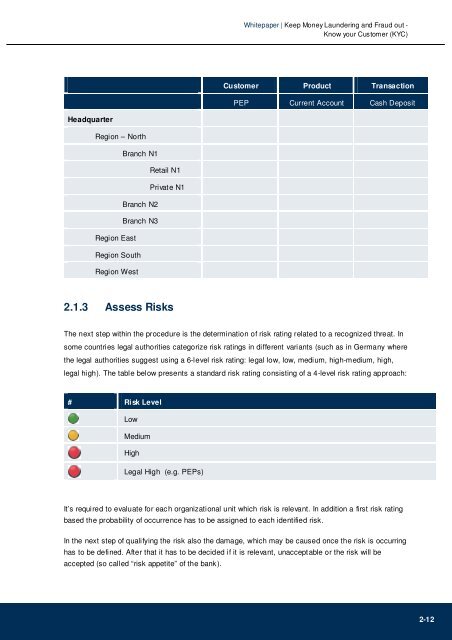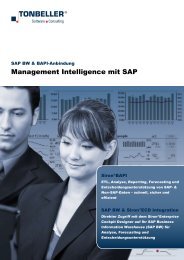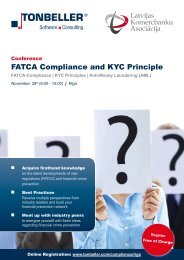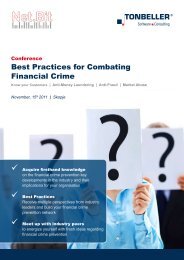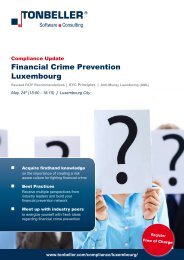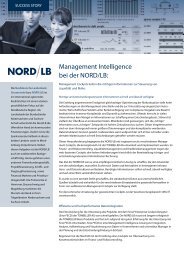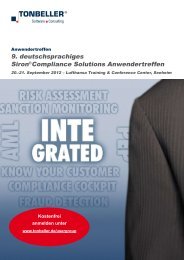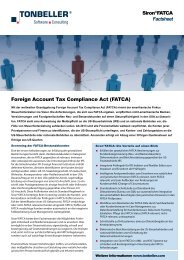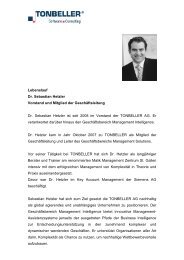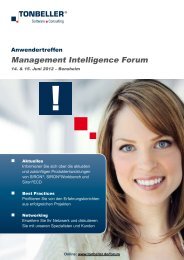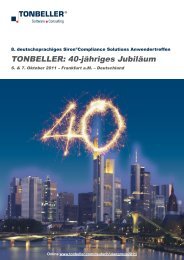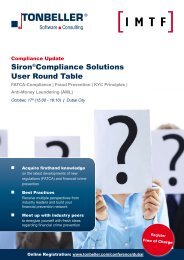Keep Money Laundering and Fraud out - TONBELLER® AG
Keep Money Laundering and Fraud out - TONBELLER® AG
Keep Money Laundering and Fraud out - TONBELLER® AG
Create successful ePaper yourself
Turn your PDF publications into a flip-book with our unique Google optimized e-Paper software.
Headquarter<br />
Region – North<br />
Region East<br />
Branch N1<br />
Branch N2<br />
Branch N3<br />
Region S<strong>out</strong>h<br />
Region West<br />
Retail N1<br />
Private N1<br />
2.1.3 Assess Risks<br />
Whitepaper | <strong>Keep</strong> <strong>Money</strong> <strong>Laundering</strong> <strong>and</strong> <strong>Fraud</strong> <strong>out</strong> -<br />
Know your Customer (KYC)<br />
Customer Product Transaction<br />
PEP Current Account Cash Deposit<br />
The next step within the procedure is the determination of risk rating related to a recognized threat. In<br />
some countries legal authorities categorize risk ratings in different variants (such as in Germany where<br />
the legal authorities suggest using a 6-level risk rating: legal low, low, medium, high-medium, high,<br />
legal high). The table below presents a st<strong>and</strong>ard risk rating consisting of a 4-level risk rating approach:<br />
# Risk Level<br />
Low<br />
Medium<br />
High<br />
Legal High (e.g. PEPs)<br />
It’s required to evaluate for each organizational unit which risk is relevant. In addition a first risk rating<br />
based the probability of occurrence has to be assigned to each identified risk.<br />
In the next step of qualifying the risk also the damage, which may be caused once the risk is occurring<br />
has to be defined. After that it has to be decided if it is relevant, unacceptable or the risk will be<br />
accepted (so called “risk appetite” of the bank).<br />
2-12


